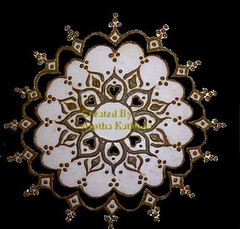So what is henna really?
Henna (Lawsonia inermis) is a plant that grows in hot climates and can be found in most African and Middle Eastern countries such as Iran, Pakistan, Syria, Egypt and India. The henna plant can grow 8 to 10 feet high and its leaves are dried, crushed and ground into a powder. The natural dyeing properties found in Henna are tannins, this is what allows the henna (when mixed with other ingredients) to temporarily stain the skin. While henna is the plant, mehendi is the traditional art of decorating the hands, feet, & shins with a henna paste.
Labels: body art, henna, mehandi, mehendi, tattoos, temporary tattoos
 The Art of Henna designing
The Art of Henna designing

